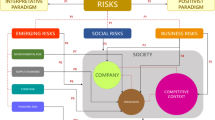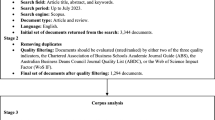Abstract
Project managers need to manage risks throughout the project lifecycle and, thus, need to know how changes in activity durations influence project duration and risk. We propose a new indicator (the Activity Risk Index, ARI) that measures the contribution of each activity to the total project risk while it is underway. In particular, the indicator informs us about what activities contribute the most to the project’s uncertainty so that project managers can pay closer attention to the performance of these activities. The main difference between our indicator and other activity sensitivity metrics in the literature (e.g. Cruciality, Criticality, Significance, or Schedule Sensitivity Indices) is that our indicator is based on the Schedule Risk Baseline concept instead of on cost or schedule baselines. The new metric not only provides information at the beginning of the project, but also while it is underway. Furthermore, the ARI is the only one to offer a normalized result: if we add its value for each activity, the total sum is 100%.







Similar content being viewed by others
References
Acebes F, Pajares J, Galán JM, López-Paredes A (2013) Beyond earned value management: a graphical framework for integrated cost, schedule and risk monitoring. Proc Soc Behav Sci 74:231–239
Acebes F, Pajares J, Galán JM, López-Paredes A (2014a) Exploring the influence of seasonal uncertainty in project risk management. Proc Soc Behav Sci 119:329–338
Acebes F, Pajares J, Galán JM, López-Paredes A (2014b) A new approach for project control under uncertainty. Going back to the basics. Int J Proj Manag 32:423–434
Anbari FT (2003) Earned value project management method and extensions. Proj Manag J 34:12–23
Bowman ARA (1995) Efficient estimation of arc criticalities in stochastic activity networks. Manag Sci 41:58–67
Bowman RA, Muckstadt J (1993) Stochastic analysis of cyclic schedules. Oper Res 41:947–958
Cagno E, Caron F, Mancini M (2008) Dynamic analysis of project risk. Int J Risk Assess Manag 10:70–87
Chanas S, Zieliński P (2002) The computational complexity of the criticality problems in a network with interval activity times. Eur J Oper Res 136:541–550
Chen SP (2007) Analysis of critical paths in a project network with fuzzy activity times. Eur J Oper Res 183:442–459
Chen CT, Huang SF (2007) Applying fuzzy method for measuring criticality in project network. Inf Sci (NY) 177:2448–2458
Cho JG, Yum BJ (1997) An uncertainty importance measure of activities in PERT networks. Int J Prod Res 35:2737–2770
Chou J-S (2011) Cost simulation in an item-based project involving construction engineering and management. Int J Proj Manag 29:706–717
Cui W, Qin J, Yue C (2007) Criticality measurement in PERT networks. In: Conference Proceedings of the IEEE international conference systems man cybernetics, vol 1, pp 703–706
Dodin BM, Elmaghraby SE (1985) Approximating the criticality indices of the activities in PERT networks. Manag Sci 31:207–224
Elmaghraby SE (2000) On criticality and sensitivity in activity networks. Eur J Oper Res 127:220–238
Elmaghraby SE, Fathi Y, Taner MR (1999) On the sensitivity of project variability to activity mean duration. Int J Prod Econ 62:219–232
Fleming QW, Koppelman JM (1998) Earned value project management. CROSSTALK J Def Softw Eng 11:19–23
Ghomi SMTF, Teimouri E (2002) Path critical index and activity critical index in PERT networks. Eur J Oper Res 141:147–152
Gutierrez G, Paul A (2000) Analysis of the effects of uncertainty, risk-pooling, and subcontracting mechanisms on project performance. Oper Res 48:927–938
Hulett DT (1996) Schedule risk analysis simplified. PM Netw 1996:22–30
Jassbi J, Jafari H, Khanmohammadi S (2008) Fuzzy expert system for determining the criticality of activities in mega projects. In: Proceedings of the 8th international conference hybrid intelligent systems, HIS 2008, pp 246–251
Klingel AR (1966) Bias in pert project completion time calculations for a real network. Manag Sci 13:B194–B201
Kuchta D (2001) Use of fuzzy numbers in project risk (criticality) assessment. Int J Proj Manag 19:305–310
Lin FT, Yao JS (2003) Fuzzy critical path method based on signed-distance ranking and statistical confidence-interval estimates. J Supercomput 24:305–325
Liu Y, Wang ZF (2013) Analysis of project schedule risk indexes in PERT network using Monte Carlo simulation. Adv Mater Res 760–762:2205–2211
Madadi M, Iranmanesh H (2012) A management oriented approach to reduce a project duration and its risk (variability). Eur J Oper Res 219:751–761
Martin JJ (1965) Distribution of the time through a directed, acyclic network. Oper Res 13:4–66
Pajares J, López-Paredes A (2011) An extension of the EVM analysis for project monitoring: the cost control index and the schedule control index. Int J Proj Manag 29:615–621
Project Management Institute (2004) A guide to the project management body of knowledge: PMBoK guide, 3rd edn
Project Management Institute (2009) Practice standard for project risk management. Project Management Institute Inc., Newtown Square
Project Management Institute (2017) A guide to the project management body of knowledge: PMBoK(R) guide, 6th edn. Project Management Institute Inc., Newtown Square
Schonberger RJ (1981) Why projects are “Always” late: a rationale based on manual simulation of a PERT/CPM network. Interfaces (Providence) 11:66–70
Tavares LV, Ferreira JA, Coelho JS (2002) A comparative morphologic analysis of benchmark sets of project networks. Int J Proj Manag 20:475–485
Tavares LV, Ferreira JA, Coelho JS (2004) A surrogate indicator of criticality for stochastic project networks. Int Trans Oper Res 11:193–202
Van Slyke RM (1963) Monte Carlo methods and the PERT problem. Oper Res 11:839–860
Vanhoucke M (2010) Using activity sensitivity and network topology information to monitor project time performance. Omega 38:359–370
Vanhoucke M (2011) On the dynamic use of project performance and schedule risk information during project tracking. Omega 39:416–426
Vanhoucke M (2012a) Measuring the efficiency of project control using fictitious and empirical project data. Int J Proj Manag 30:252–263
Vanhoucke M (2012b) Project management with dynamic scheduling: baseline scheduling, risk analysis and project control. Springer, Berlin
Vanhoucke M (2015) On the use of schedule risk analysis for project management. J Mod Proj Manag 2:108–117
Vanhoucke M (2016) Integrated project management sourcebook: a technical guide to project scheduling, risk and control. Springer, Berlin
Williams TM (1992) Criticality in stochastic networks. J Oper Res Soc 43:353–357
Author information
Authors and Affiliations
Corresponding author
Additional information
Publisher's Note
Springer Nature remains neutral with regard to jurisdictional claims in published maps and institutional affiliations.
Rights and permissions
About this article
Cite this article
Acebes, F., Pajares, J., González-Varona, J.M. et al. Project risk management from the bottom-up: Activity Risk Index. Cent Eur J Oper Res 29, 1375–1396 (2021). https://doi.org/10.1007/s10100-020-00703-8
Published:
Issue Date:
DOI: https://doi.org/10.1007/s10100-020-00703-8




